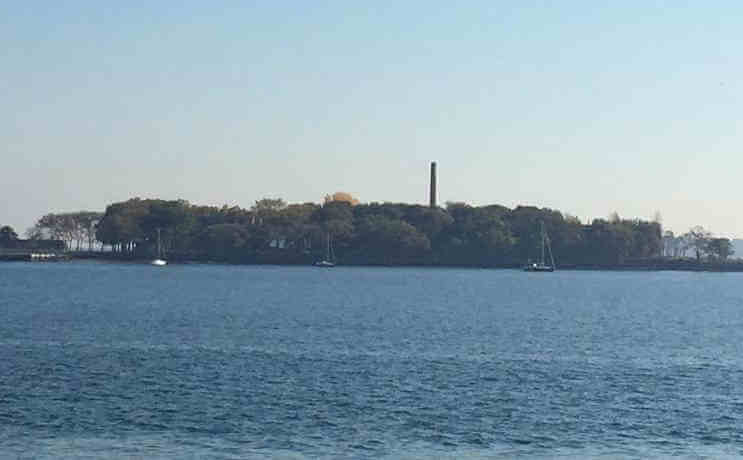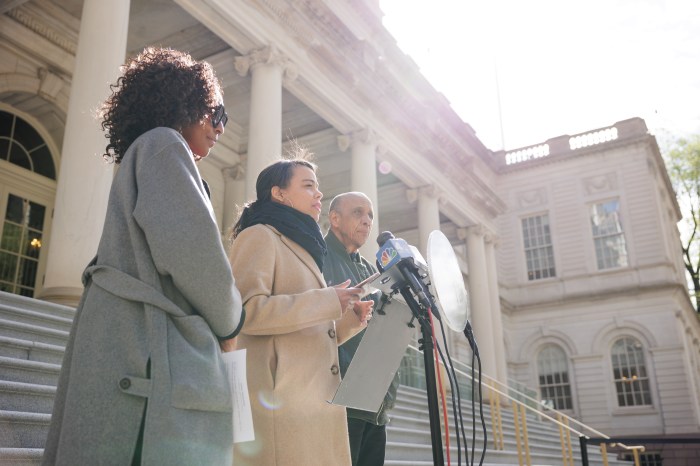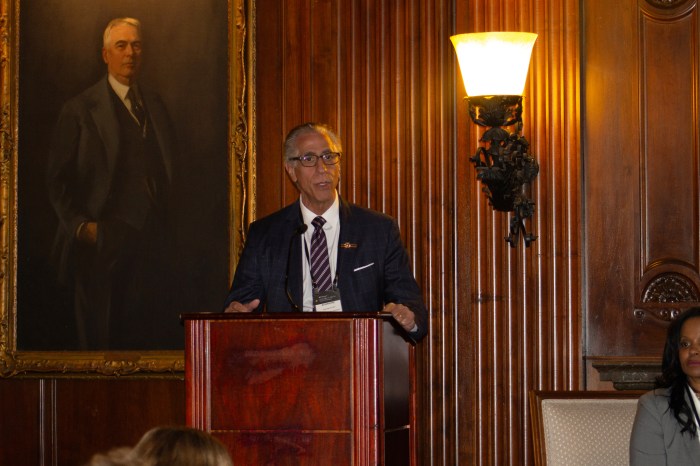Hart Island, the location of Potter’s Field, a city burial site for unclaimed bodies of deceased residents or visitors, may be open to more visitors if the NYC Council passes several bills that are targeting a reversal of the site’s current regulations.
At Thursday, October 10’s Community Board 10 Parks and Recreation Committee meeting at their office, the current status and future plans for Hart Island were reviewed.
The meeting was attended by Councilman Mark Gjonaj, members of the Hart Island Project and representatives from NYC Council speaker Corey Johnson’s office, along with CB10 residents.
At the meeting, Johnson’s representatives explained that the plan to improve Hart Island access would be contingent on the passing of four pieces of legislation.
One bill, Bill 906, would transfer the jurisdiction of Hart Island from the NYC Department of Corrections to the NYC Department of Parks and Recreation. It was explained at the meeting that if jurisdiction was transferred, Parks would not be assigned to perform the burials.
A revamped transportation plan for Hart Island is also under consideration. Council Bill 909-b calls for more frequent ferry service, after appropriate traffic studies are conducted by the NYC Department of Transportation.
This bill was not well received by City Island residents at the meeting. Citing both traffic and parking concerns, the islanders appeared opposed to initiating more frequent travel to Hart Island, which is reached by ferry service from Fordham Street.
Currently, the DOC only offers gazebo visits on the third Thursday of every month and gravesite visits twice a month on weekends for close family members of the deceased.
Before 2015, family members of the departed required an attorney to visit the Hart Island gravesite, until a class action lawsuit filed by the New York Civil Liberties Union established rights for families to visit their loved ones who are buried there.
Council Bill 1559-a would establish a manned contact office on the island that would answer questions or provide information about a loved one, while Bill 1580-a would lead to the creation of public discourse for Hart Island.
These four bills were initially presented by the Council this past May.
CB 10 voted down a 2015 attempt to transfer Hart Island’s jurisdiction from DOC to Parks.
“My priority has always been to preserve and protect those who are buried on Hart Island,” said Councilman Gjonaj, who also expressed his displeasure with the fact that prisoners are paid less than $5 a day to bury the dead.
Visiting Hart Island, located one third of a mile east of City Island, does come with rules and restrictions. Visitors must provide photo ID and surrender their cell phones before boarding the ferry.
“This is an important and historic site that needs to be preserved – and provide a decent burial for unidentified individuals,” said Melinda Hunt, president and founding director of the Hart Island Project, a non-profit organization that assists families in finding loved ones, negotiating grave site visits and obtaining copies of public burial records.
Hunt, a visual artist, began the Hart Island Project in 1991 along with photographer Joel Sternfeld.
Hart Island’s history dates back to 1654, when Thomas Pell purchased the island from the Siwanoy tribe. In 1865, the island hosted a temporary prisoner-of-war camp for over 3,000 Confederate soldiers who were captured during the Civil War. Public burials of the unclaimed and unidentified began in 1869 – a burial site that was called City Cemetery and Potter’s Field. In the 1980s, the eastern portion of Hart Island was used as a burial ground for AIDS victims.
In the 150-year span, over a million people have been buried on Hart Island, making it home to the largest municipal cemetery in the United States.
During the cold war and the war on drugs it also had special significance. The island was once home to a Nike Missile site and an Odessey House drug rehab center.






















